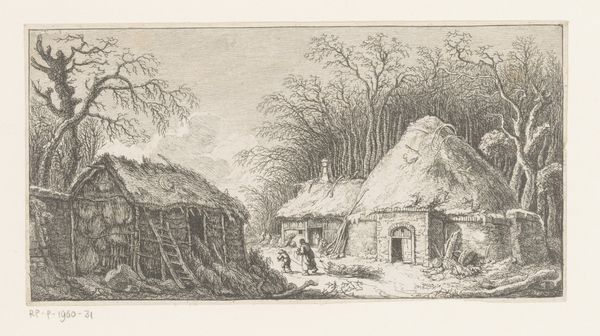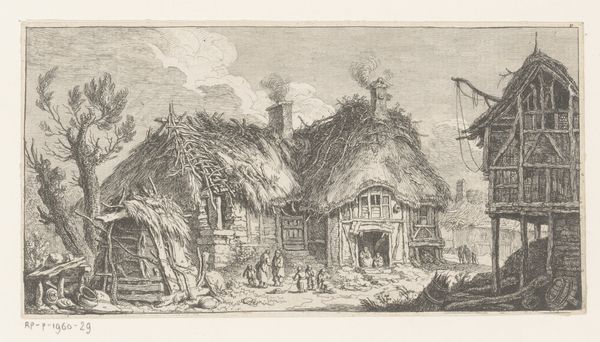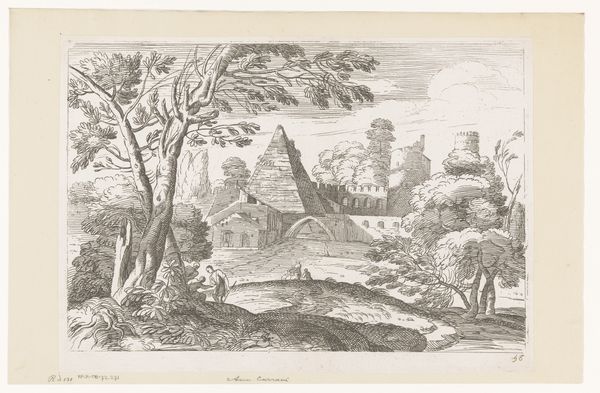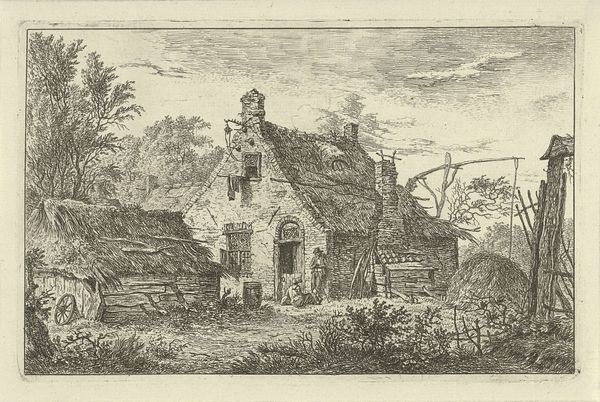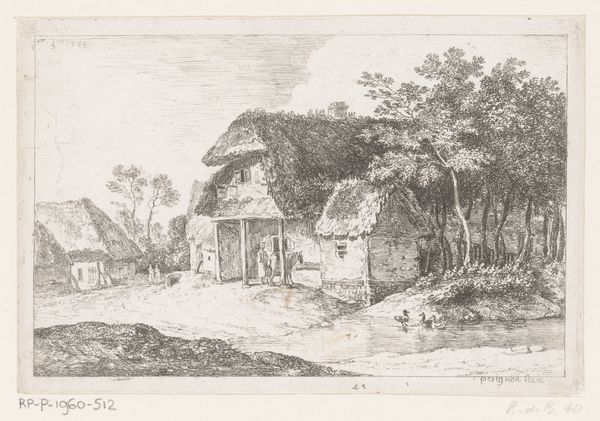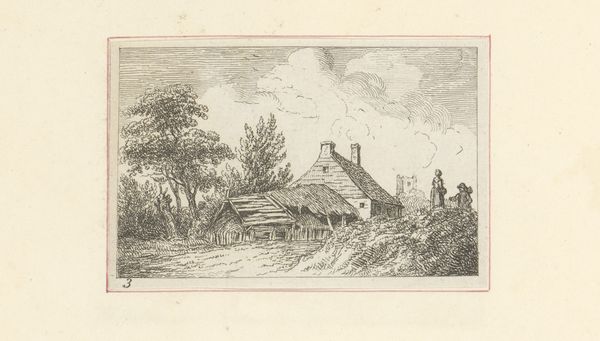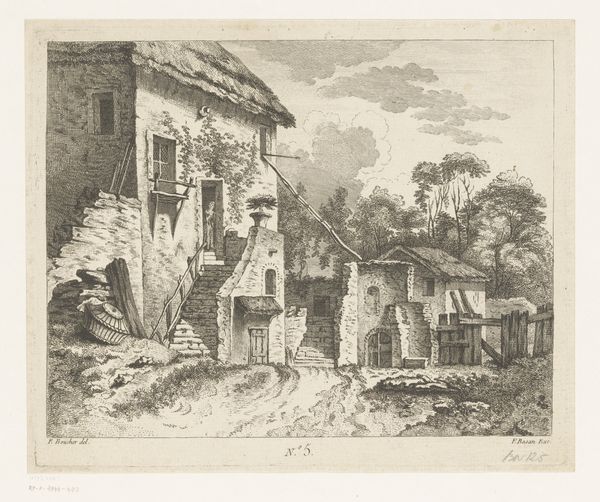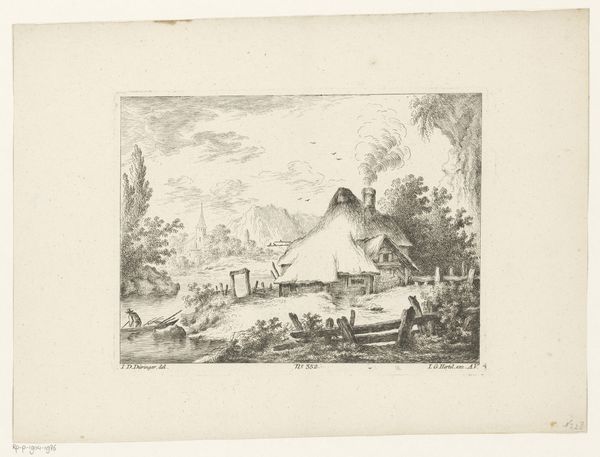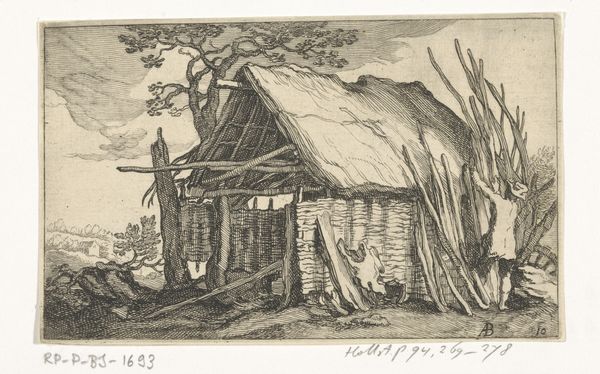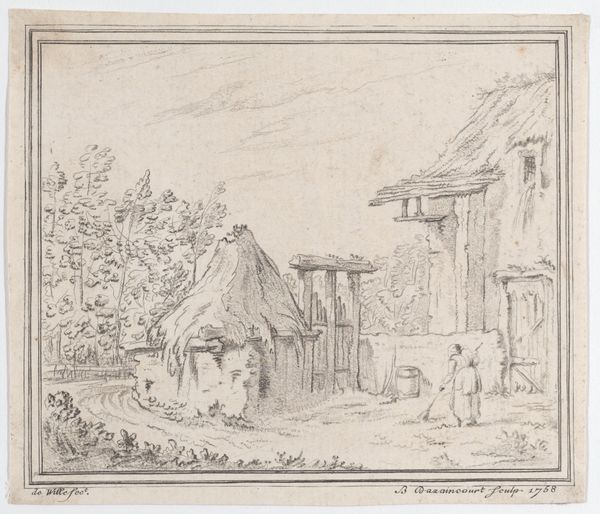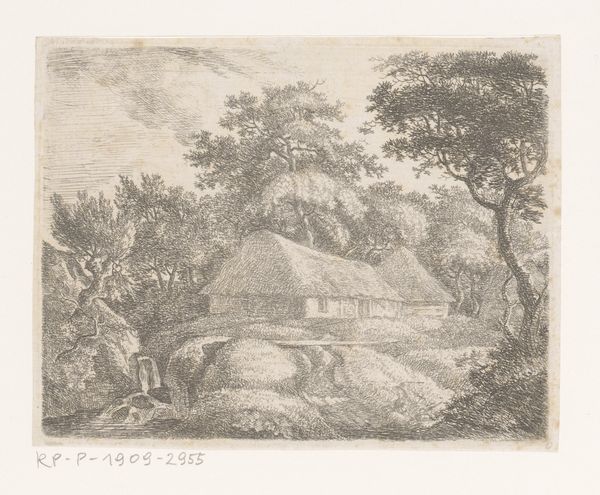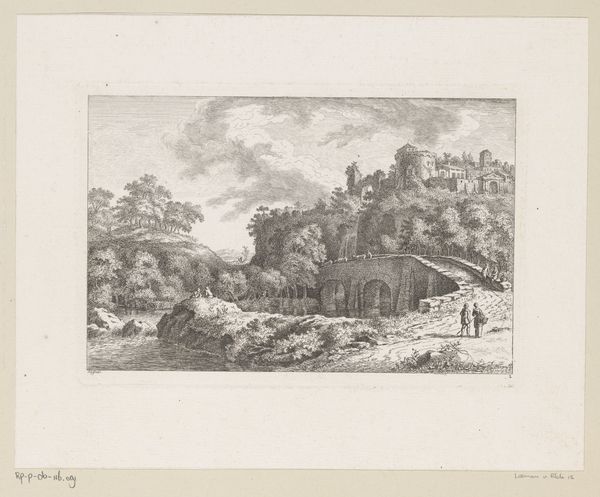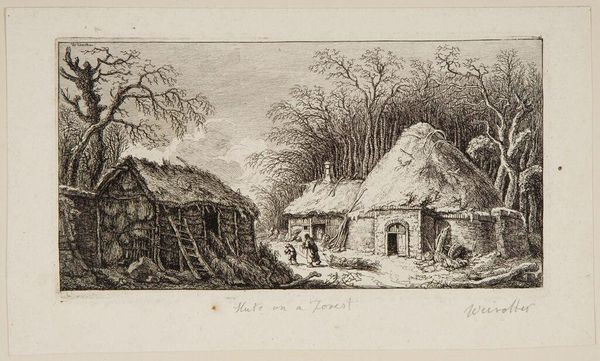
Dimensions: height 98 mm, width 183 mm
Copyright: Rijks Museum: Open Domain
Editor: So, this engraving by Franz Edmund Weirotter, called "Farmhouse with a Man, Woman, and Playing Children", was done in 1763. It feels… quaint? I’m drawn to the intricate detail in the thatched roof, but I wonder, what strikes you most when you look at this piece? Curator: "Quaint" is a lovely start, setting the tone like a gentle breeze rustling through the scene. For me, it's the quiet dignity of the everyday. I see lives etched into the landscape, you know? The way the light falls on that ramshackle farmhouse, the posture of the figures. Weirotter is suggesting something essential about the human connection to place. Do you get a sense of story, of narratives whispered on the wind? Editor: I do see the story now. The engraving seems very detailed, especially the little figures and all the grass. What kind of a place would this have been, do you think? Curator: Probably a humble dwelling, but bustling with life. Imagine the stories that those walls could tell, if they could only gossip! It feels very baroque, the scene sort of tumbles onto us. What's wonderful, though, is how Weirotter elevates a simple scene to something almost heroic. He's not painting kings and queens, but he's finding beauty in the ordinary, and that is pretty heroic. Editor: That makes a lot of sense! I like the thought of the artist making the everyday into something worth seeing, worth remembering. Curator: Exactly! Perhaps what art can really be is noticing something new. A gentle moment with family is worth noticing, and this piece seems to echo that sentiment across time. Thanks for the conversation. Editor: Thank you. It gave me so much to think about!
Comments
No comments
Be the first to comment and join the conversation on the ultimate creative platform.
